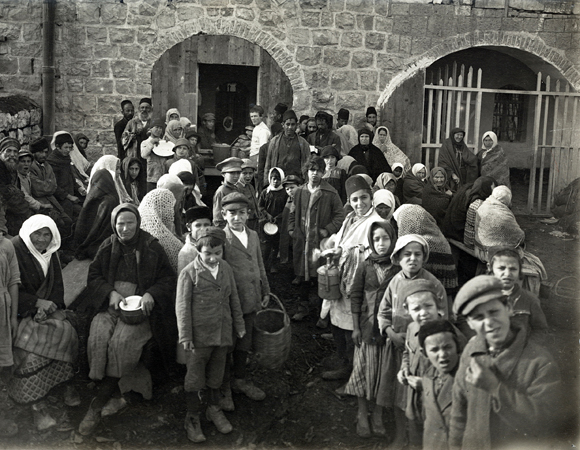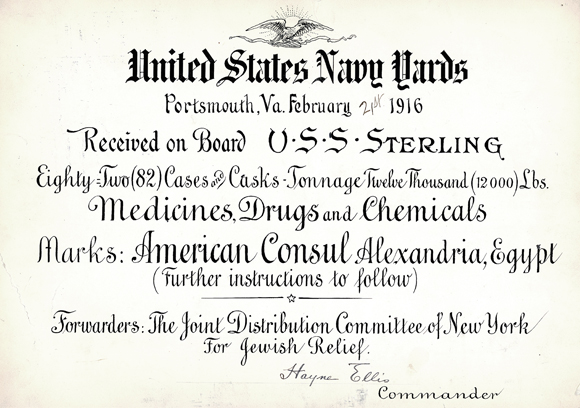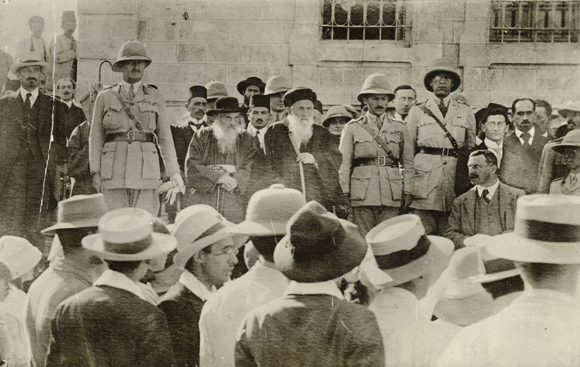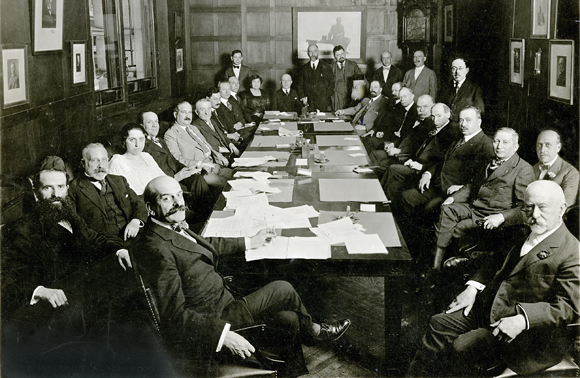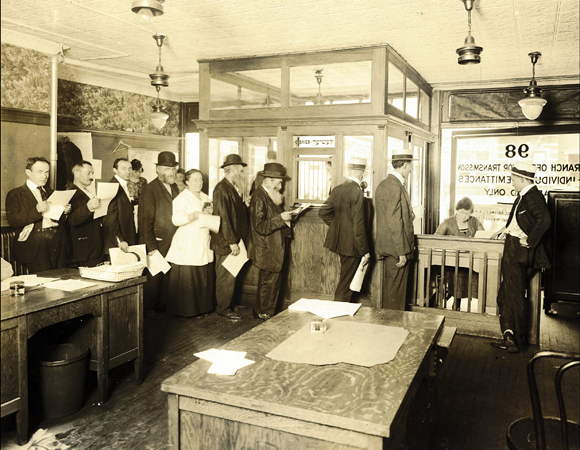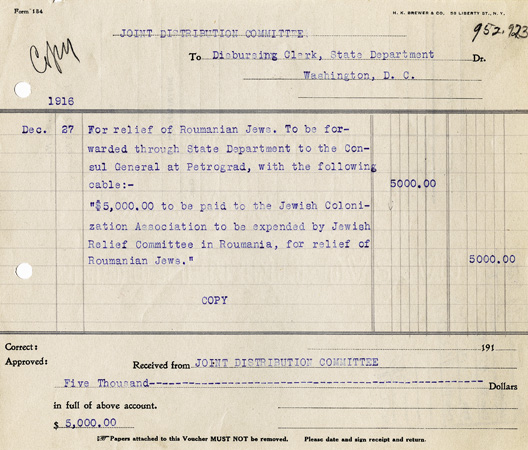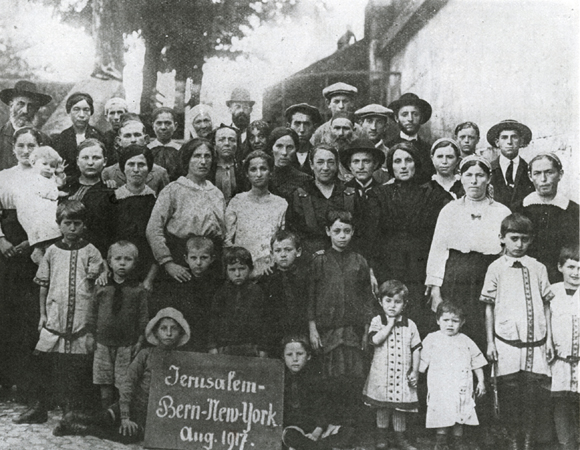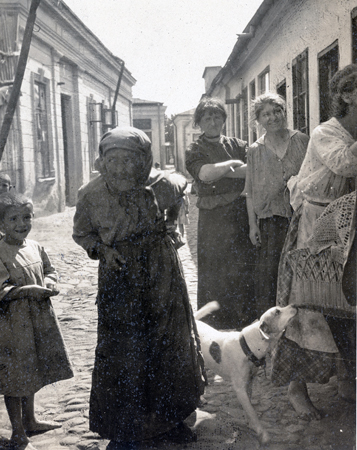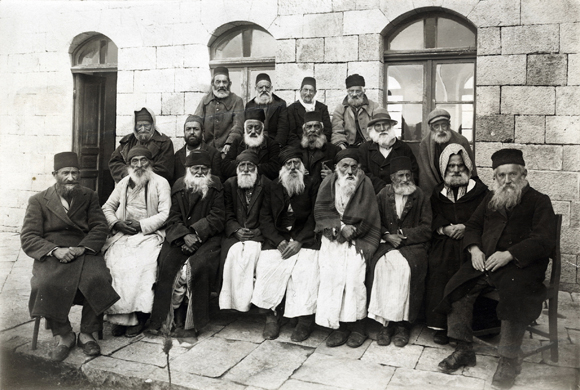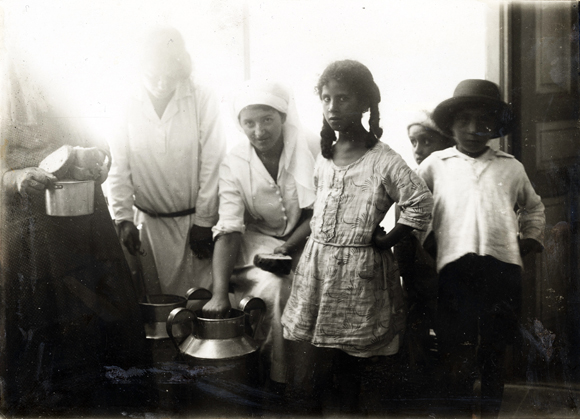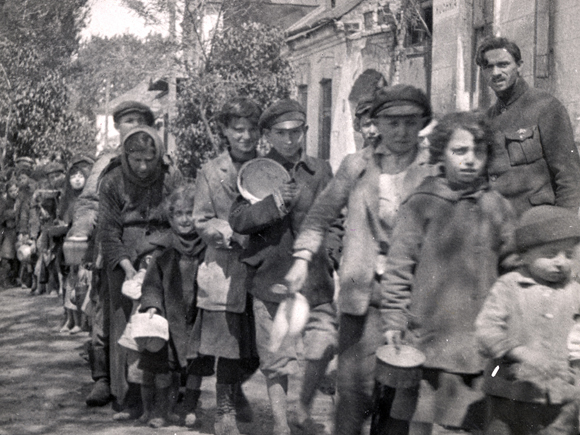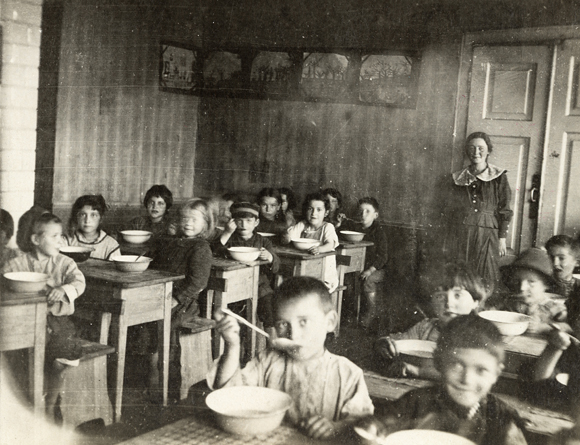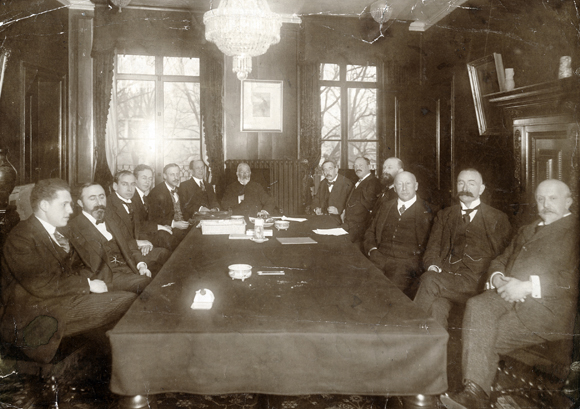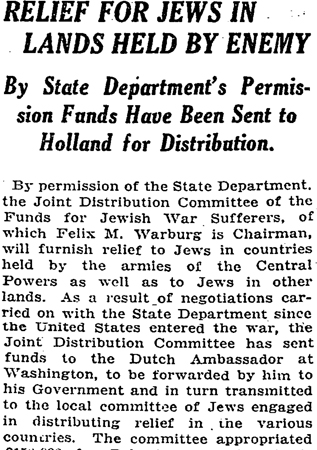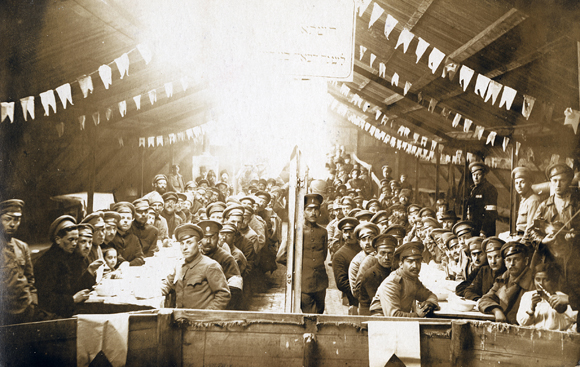Wrestling with Chaos
A Joint Effort: JDC's Beginnings, 1914-1921
Wrestling with Chaos
Chaotic wartime conditions made relief work slow and unpredictable. Through trial and error, JDC administrators learned whom they could trust, and how best to ship goods to their intended beneficiaries. A series of durable relationships were gradually established with government officials, diplomatic envoys, and regional groups. In the midst of these large endeavors, JDC helped individuals divided by war to maintain contact.
Providing for Palestine
A majority of Palestine's 82,000 Jews required some relief during the war. Besides blockading European shipments, the Turkish military commandeered all transport. The U.S. Consul first supervised JDC aid. Later, JDC appointed its own representative.
Facing Upheaval in Europe
By the end of 1915, JDC was providing food and other necessities to starving Jews in Eastern Europe. As long as the German, Austro-Hungarian and Russian Empires controlled vast territories and America remained neutral, this was done through established European philanthropic organizations.
Dislocated Lives
Entire Jewish shtetls and towns fell apart as homes and the civic institutions supporting community life were destroyed. Civilian populations treated like enemies were forced or frightened into flight to whichever places had not yet been caught up in the turmoil.
Relief Arrives
JDC subsidized locally-run soup kitchens and food distribution centers in Palestine and Eastern Europe. Eventually, it opened additional facilities. In one month in 1917, JDC served meals to over 600,000 people in Warsaw alone.
A Branch in Holland
Once America entered the war (April 2, 1917), it was no longer possible to distribute aid through German or Austrian organizations. Backed by the U.S. and Dutch Governments, JDC established its first overseas branch in neutral Holland to work closely with a relief committee of Dutch Jews.

